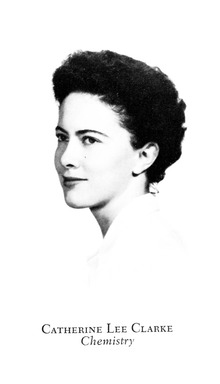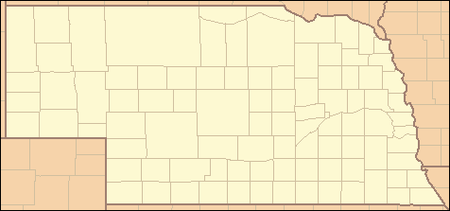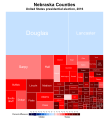The Flag of Nebraska Nebraska nə-BRASS -kə state in the Midwestern region of the United States . It borders South Dakota to the north; Iowa to the east and Missouri to the southeast, both across the Missouri River ; Kansas to the south; Colorado to the southwest; and Wyoming to the west. Nebraska is the 16th largest state by land area , with just over 77,220 square miles (200,000 km2 ). With a population of over 1.9 million, it is the 37th most populous state and the 7th least densely populated . Its capital is Lincoln , and its most populous city is Omaha , which is on the Missouri River . Nebraska was admitted into the United States in 1867, two years after the end of the American Civil War . The Nebraska Legislature is unlike any other American legislature in that it is unicameral , and its members are elected without any official reference to political party affiliation .
Nebraska is composed of two major land regions: the Dissected Till Plains and the Great Plains . The Dissected Till Plains region consists of gently rolling hills and contains the state's largest cities, Omaha and Lincoln. The Great Plains region, occupying most of western Nebraska, is characterized by treeless prairie . Eastern Nebraska has a humid continental climate while western Nebraska is primarily semi-arid . The state has wide variations between winter and summer temperatures; the variations decrease in southern Nebraska. Violent thunderstorms and tornadoes occur primarily during spring and summer, and sometimes in autumn. Chinook wind tends to warm the state significantly in the winter and early spring.
Indigenous peoples, including Omaha , Missouria , Ponca , Pawnee , Otoe , and various branches of the Lakota (Sioux ) tribes, lived in the region for thousands of years before European discovery and exploration . The state is crossed by many historic trails, including that of the Lewis and Clark Expedition . The completion of the Transcontinental Railroad through Nebraska and passage of the Homestead Acts led to rapid growth in the population of American settlers in the 1870s and 1880s and the development of a large agriculture sector for which the state is known to this day. (Full article...
The Nebraska Cornhuskers football NCAA Division I Football Bowl Subdivision , representing the University of Nebraska–Lincoln in the West Division of the Big Ten . Nebraska plays its home games at Memorial Stadium , where it has sold out every game since 1962.
Nebraska is among the most storied programs in college football history and has the eighth-most all-time victories among FBS teams. Nebraska claims forty-six conference championships and five national championships (
1970 ,
1971 ,
1994 ,
1995 , and
1997 ), and has won six other national championships the school does not claim. NU's 1971 and 1995 title-winning teams are considered among the best in college football history. Famous Cornhuskers include
Heisman Trophy winners
Johnny Rodgers ,
Mike Rozier , and
Eric Crouch , who join twenty-two other Cornhuskers in the
College Football Hall of Fame . Notable among these are players
Bob Brown ,
Guy Chamberlin ,
Tommie Frazier ,
Rich Glover ,
Dave Rimington , and
Will Shields , and coaches
Bob Devaney and
Tom Osborne . (
Full article... )
List of selected articles
History of Nebraska List of Nebraska state symbols List of counties in Nebraska List of governors of Nebraska Governor of Nebraska Lincoln, Nebraska Omaha, Nebraska Mormon Trail Nebraska (film) African Americans in Omaha, Nebraska Historic Presbyterian Community Center (Madison, Nebraska) Pike-Pawnee Village Site University of Nebraska Omaha Lewis and Clark Lake McCook Gazette Dowse Sod House Strang School District No. 36 Lake McConaughy 1990 Nebraska gubernatorial election Nebraska Medicine Warrick house (Meadow Grove, Nebraska) Capital punishment in Nebraska Saint Leonard Catholic Church (Madison, Nebraska) Engineer Cantonment Fontenelle Forest Homestead National Historical Park Ashfall Fossil Beds History of Lincoln, Nebraska Economy of Omaha, Nebraska Berkshire Hathaway Racial tension in Omaha, Nebraska History of Nebraska Cornhuskers football Battle of Mud Springs COVID-19 pandemic in Nebraska Hartington City Hall and Auditorium Germans in Omaha, Nebraska 2019 Midwestern U.S. floods LGBT rights in Nebraska Union Pacific Corporation Omaha Mavericks men's ice hockey Spade Ranch (Nebraska) North Omaha, Nebraska Rice–Poindexter case Standing Bear Bellevue, Nebraska Grand Island, Nebraska Hastings, Nebraska U.S. Route 385 in Nebraska List of Omaha landmarks Cabela's University of Nebraska–Lincoln Creighton Preparatory School Ogallala Aquifer 2020 United States presidential election in Nebraska 2020 United States Senate election in Nebraska Interstate 180 (Nebraska)
Catherine Clarke Fenselau (born 15 April 1939) is an American scientist who was the first trained
mass spectrometrist on the faculty of an American medical school; she joined
Johns Hopkins School of Medicine in 1968. She specializes in biomedical applications of mass spectrometry. She has been recognized as an outstanding scientist in the field of bioanalytical chemistry because of her work using mass spectrometry to study biomolecules. (
Full article... )
List of selected biographies
The following are images from various Nebraska-related articles on Wikipedia.
Image 1 Homesteaders in central Nebraska in 1888
(from
Nebraska )
Image 2 Nebraska grain bins and elevator (from
Nebraska )
Image 3 Omaha, Nebraska's largest city (from
Nebraska )
Image 5 Nebraska in 1718,
Guillaume de L'Isle map, with the approximate area of the future state highlighted (from
Nebraska )
Image 6 Ethnic origins in Nebraska (from
Nebraska )
Image 7 Treemap of the popular vote by county, 2016 presidential election (from
Nebraska )
Image 9 Köppen climate types of Nebraska, using 1991-2020
climate normals (from
Nebraska )
Image 11 Football game at the University of Nebraska on September
6, 2008 (from
Nebraska )
Image 12 A map of Nebraska (from
Nebraska )
Image 15 Homesteaders in central Nebraska in 1866 (from
History of Nebraska )
Image 16 Homesteaders in central Nebraska in 1888
(from
Nebraska )
Image 17 A land offer from the Burlington and Missouri River Railroad, 1872 (from
History of Nebraska )
Image 18 Population density in Nebraska (from
Nebraska )
Image 19 A map of Nebraska (from
Nebraska )
Image 20 Map of counties in Nebraska by racial plurality, per the 2020 U.S. census
Non-Hispanic White 40–50%
50–60%
60–70%
70–80%
80–90%
90%+
Native American 60–70%
(from
Nebraska )
Image 21 A
cropduster in agrarian Nebraska, far west of Omaha (from
Nebraska )
Image 22 1859 map of route from Sioux City, Iowa, through Nebraska, to gold fields of Wyoming, partially following old Mormon trails. (from
History of Nebraska )
Image 23 Nebraska grain bins and elevator (from
Nebraska )
Image 25 Omaha, Nebraska's largest city (from
Nebraska )
Image 26 Ethnic origins in Nebraska (from
Nebraska )
Image 27 Köppen climate types of Nebraska, using 1991-2020
climate normals (from
Nebraska )
Image 28 Population density in Nebraska (from
Nebraska )
Image 29 Football game at the University of Nebraska on September
6, 2008 (from
Nebraska )
Image 30 "Crow Dog", a
Brulé Native American in 1898. (from
History of Nebraska )
Image 32 Nebraska in 1718,
Guillaume de L'Isle map, with the approximate area of the future state highlighted (from
Nebraska )
Image 34 Wagon train headed to California (from
History of Nebraska )
Image 35 A
cropduster in agrarian Nebraska, far west of Omaha (from
Nebraska )
Image 36 Map of counties in Nebraska by racial plurality, per the 2020 U.S. census
Non-Hispanic White 40–50%
50–60%
60–70%
70–80%
80–90%
90%+
Native American 60–70%
(from
Nebraska )
Image 37 Treemap of the popular vote by county, 2016 presidential election (from
Nebraska )
Federal
State
State Parks State Historical Parks State Recreation Areas State Recreation Trails
2014 Rank
City
2016 Estimate[1]
2010 Census[2]
Change
County
1
Omaha
446,970
408,958
+9.29%
Douglas
2
Lincoln
280,364
258,379
+8.51%
Lancaster
3
Bellevue
53,505
50,137
+6.72%
Sarpy
4
Grand Island
51,517
48,520
+6.18%
Hall
5
Kearney
33,520
30,787
+8.88%
Buffalo
6
Fremont
26,519
26,397
+0.46%
Dodge
7
Hastings
24,991
24,907
+0.34%
Adams
8
North Platte
24,110
24,733
−2.52%
Lincoln
9
Norfolk
24,348
24,210
+0.57%
Madison
10
Columbus
22,851
22,111
+3.35%
Platte
11
Papillion
19,597
18,894
+3.72%
Sarpy
12
La Vista
17,143
15,758
+8.79%
Sarpy
13
Scottsbluff
14,883
15,039
−1.04%
Scotts Bluff
14
South Sioux City
13,120
13,353
−1.74%
Dakota
15
Beatrice
12,362
12,459
−0.78%
Gage
Category puzzle Select [►] to view subcategories
This list was generated from
these rules . Questions and feedback
are always welcome ! The search is being run daily with the most recent ~14 days of results.
Note: Some articles may not be relevant to this project.
Rules | Match log | Results page (for watching) | Last updated: 2024-04-28 21:17 (UTC)
Note : The list display can now be customized by each user. See List display personalization for details.
Cathleen Piazza (edit | talk | history | links | watch | logs | tools )MurielMary (talk · contribs · new pages (5) Jean Louise Berg Thiessen (edit | talk | history | links | watch | logs | tools )Ljb24 (talk · contribs · new pages (4) Leonard Thiessen (edit | talk | history | links | watch | logs | tools )Ljb24 (talk · contribs · new pages (4) Thomas Berger Johnson (edit | talk | history | links | watch | logs | tools )Chancegnu (talk · contribs · new pages (1) Ellen Smith (professor) (edit | talk | history | links | watch | logs | tools )HoppinFrogman (talk · contribs · new pages (2) Dwight Kirsch (edit | talk | history | links | watch | logs | tools )Mysteriousclock (talk · contribs · new pages (2) Haydon Art Club (edit | talk | history | links | watch | logs | tools )Wallawallabingbong (talk · contribs · new pages (1) Ethel Evans (edit | talk | history | links | watch | logs | tools )SweetSquid (talk · contribs · new pages (1) John Johnson (photographer) (edit | talk | history | links | watch | logs | tools )MissBetz (talk · contribs · new pages (2) Anna E. Reid Hall (edit | talk | history | links | watch | logs | tools )Ronanthetabby (talk · contribs · new pages (2) Nina Lumbard (edit | talk | history | links | watch | logs | tools )Mysteriousclock (talk · contribs · new pages (2) Art Farm (edit | talk | history | links | watch | logs | tools )Henryeditormanzander (talk · contribs · new pages (2) Alice E. Cleaver (edit | talk | history | links | watch | logs | tools )StudiousBagel (talk · contribs · new pages (1) Rudy Smith (edit | talk | history | links | watch | logs | tools )CWu11 (talk · contribs · new pages (1) Helen Martanie Snowden (edit | talk | history | links | watch | logs | tools )Hsantoscotom (talk · contribs · new pages (1)






































